Delve into the captivating world of American Saddlebred horses with this comprehensive article. Explore the rich history, unique characteristics, and various aspects of this extraordinary breed – from showing and competitions to training and breeding practices – as well as learning about some of the most renowned horses in the American Saddlebred lineage.
Table of Contents (Horspedia)
History of American Saddlebred
The American Saddlebred, often referred to as the “Horse America Made,” has a rich and storied history that dates back to the early days of the United States. Originating from the natural-gaited horses brought to America by early settlers, the breed developed further through selective breeding practices with other breeds, including the Thoroughbred, Morgan, and Standardbred. This process yielded a horse with incredible beauty, intelligence, and versatility, known for its high-stepping and effortless gaits, making it a favorite among show and pleasure riders alike.
The American Saddlebred registry was established in 1891 as the National Saddle Horse Breeders Association, later renamed the American Saddle Horse Breeders Association. The first horse registered was a stallion named Harrison Chief, foaled in 1845. Over the years, the registry has played a crucial role in the preservation, promotion, and development of the American Saddlebred as a distinct breed. Today, there are more than 250,000 American Saddlebred horses registered in the United States and abroad.
In 1980, the registry underwent another name change, becoming the American Saddlebred Horse Association (ASHA) to better reflect its various roles in the breed’s preservation, promotion, and development. The ASHA remains the exclusive organization responsible for maintaining the American Saddlebred registry, hosting numerous events, educational programs, and awards each year. As a result of the efforts made through the ASHA, the American Saddlebred breed continues to thrive, enchanting enthusiasts and professional horsemen alike with its grace, brilliance, and truly American spirit.
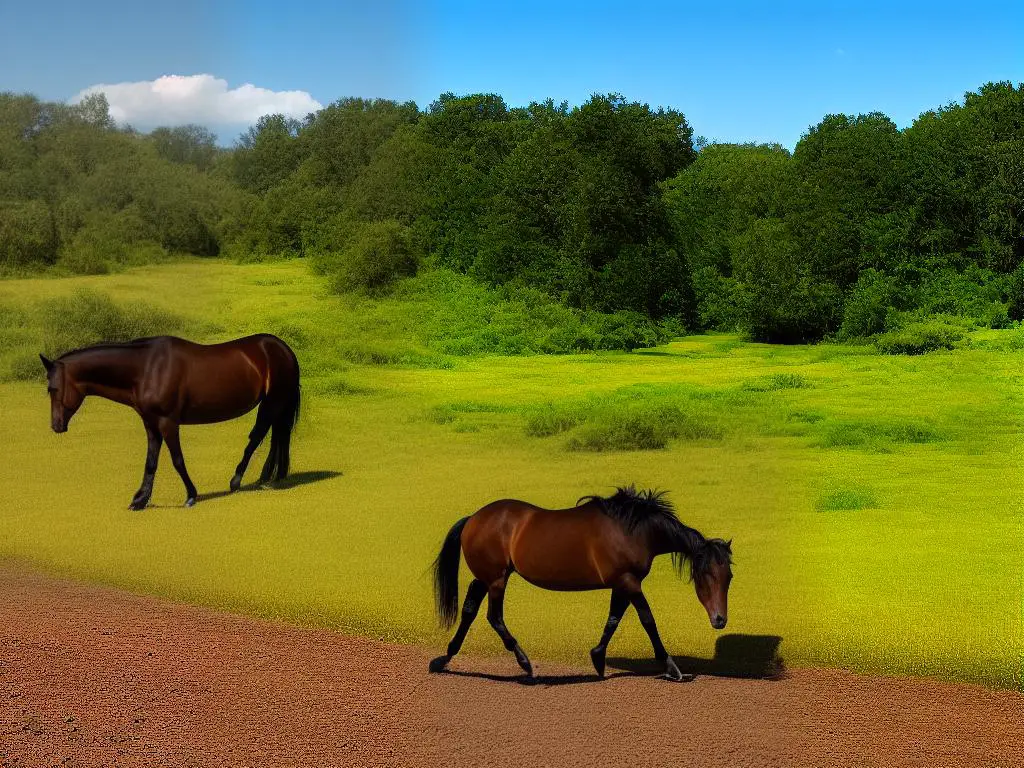
Breed Characteristics & Traits
As a versatile and elegant breed, the American Saddlebred is known for its incredible athleticism, beautiful conformation, and unique disposition. What distinguishes the Saddlebred from other breeds is its distinct conformation, characterized by a refined head, well-set large eyes, and a long, elegant neck that is gracefully arched. The body possesses a deep chest, strong shoulders, and a level top-line, which contribute to the horse’s fluid and powerful movements. This exceptional breed not only captivates the hearts of enthusiasts but also plays an essential role in the American Saddlebred Horse Association’s ongoing activities and events.
When it comes to gaits, the American Saddlebred possesses an innate natural ability to perform remarkably smooth and animated gaits, making it a popular choice for saddle seat competition disciplines. In addition to the standard walk, trot, and canter, the breed is known for two additional gaits, the slow gait and rack. The slow gait is a collected, 4-beat gait that showcases the horse’s balance and control, while the rack is a faster, free-moving gait with each foot hitting the ground separately, demonstrating the horse’s incredible agility. These gaits make the American Saddlebred a highly sought-after breed for both professional and amateur riders alike.
The American Saddlebred is a breed characterized by a spirited yet gentle temperament, which showcases their intelligence, willingness to learn, and strong work ethic. These horses are known for their amiable and affectionate nature, making them excellent companions for riders of all ages and skill levels. Their versatility extends to various disciplines, including dressage, western pleasure, driving, and even jumping, making them highly adaptable and valuable within the equine world. It’s their inherent grace, style, and charisma that truly make them stand out in the world of equestrian sports.
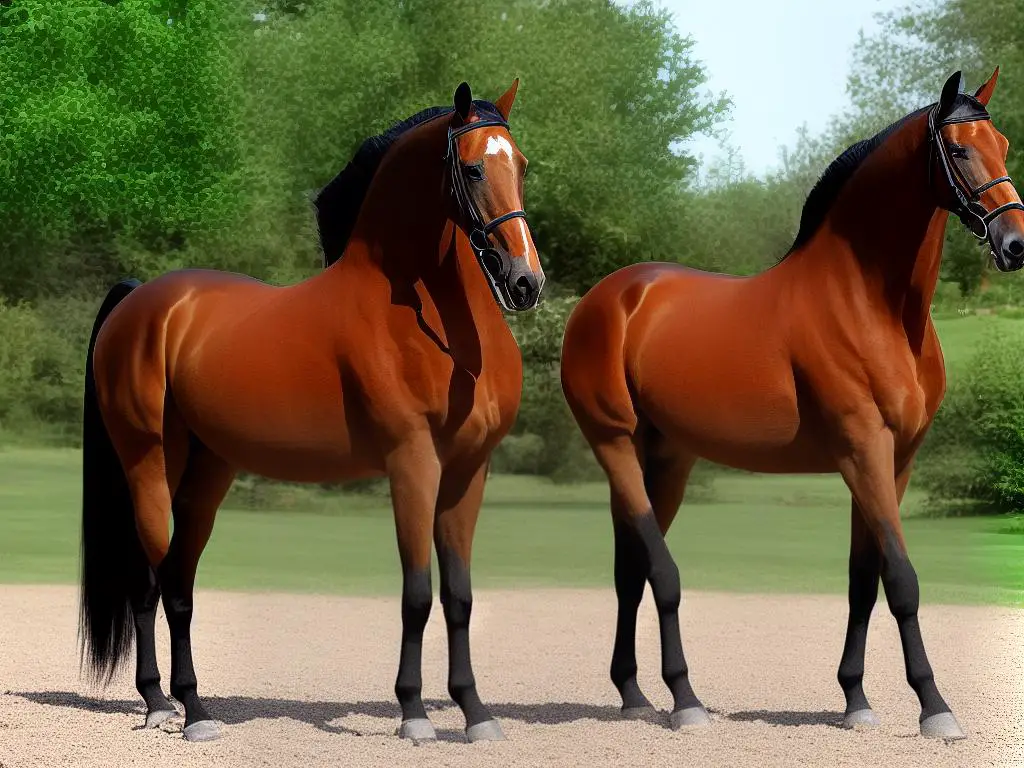
Registry & Registration Process
To ensure the purity and quality of the breed, the American Saddlebred Registry (ASR) plays a crucial role for enthusiasts and hobbyists. Established in 1891, the ASR is responsible for maintaining official records, pedigree, and ancestry of these distinguished horses. By documenting the lineage and ownership of each registered saddlebred, the registry provides vital information that enables breeders, trainers, and riders to make well-informed decisions when selecting horses for breeding, competition, or leisure purposes. With the support of the ASR, the American Saddlebred continues to thrive and maintain its esteemed position within the equine world.
To register a horse with the American Saddlebred Registry, the owner must complete a registration application that includes details about the horse, such as its name, sex, color, date of birth, and sire and dam information. Additionally, the submission must include a complete set of color photographs documenting the horse’s appearance and markings, a copy of the breeding certificate, and DNA testing for parentage verification. Fees for registering a horse vary depending on the horse’s age and the membership status of the owner with ASR.
One vital aspect to note when becoming skilled in the American Saddlebred Registry (ASR) is that registering a horse requires at least one American Saddlebred parent. The ASR takes pride in ensuring accurate record-keeping and preserving the breed’s rich and diverse lineage. Upon submission of all required documents and information, the ASR reviews and verifies the details before officially registering the horse. Once registered, owners receive an official registration certificate, which they can use when entering competitions or proving ownership. The registry also facilitates recording ownership transfers and certifying pedigree information, ensuring that all American Saddlebreds’ information is current, secure, and comprehensive.
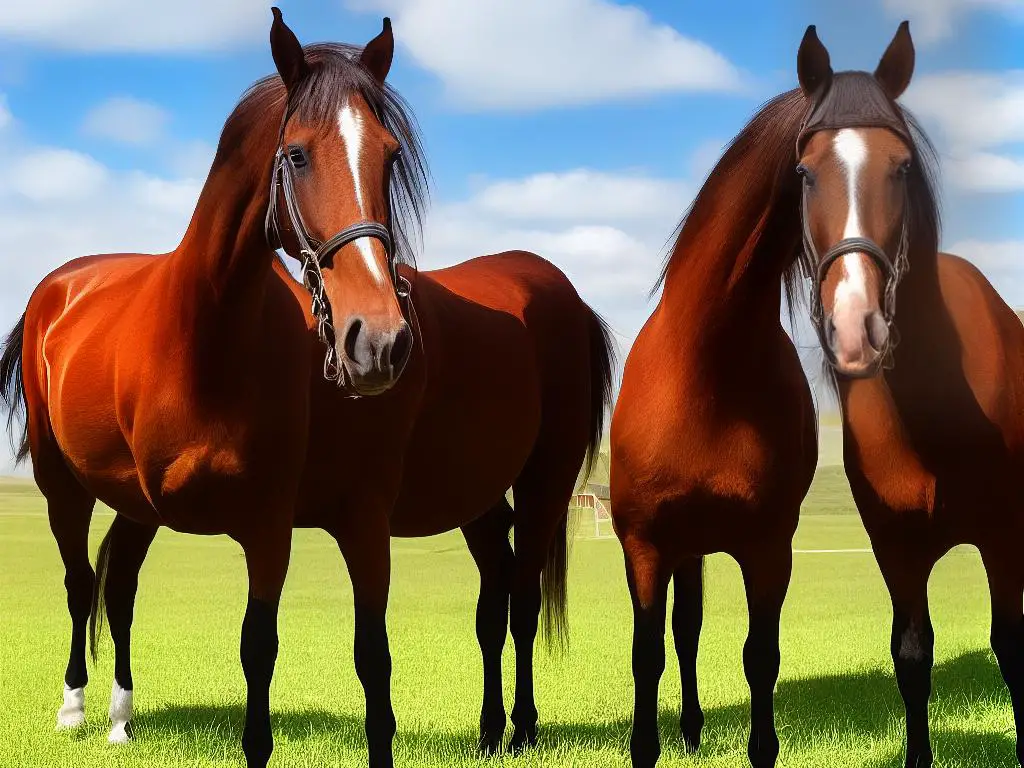
Showing & Competitions
Moving on to the world of American Saddlebred showing and competitions, there are numerous categories and disciplines that cater to the versatility and athleticism of this breed. Among these disciplines, the Five-Gaited division stands out as one of the most popular. It showcases the ability of these horses to perform five distinct gaits: walk, trot, canter, slow gait, and rack. Each gait requires precise control, demonstrating the tremendous balance and collection of these horses. In competitions, judges assess competitors based on their performance in each gait, focusing on factors such as rhythm, consistency, and overall presentation. By understanding and mastering these aspects, enthusiasts can significantly enhance their skills within the American Saddlebred Registry realm.
Another prominent discipline in American Saddlebred competitions is the Three-Gaited division, where horses showcase their smooth walk, trot, and canter. Additionally, there are performance classes such as Fine Harness, Pleasure, and Park, which assess the horse’s ability in various styles of riding and driving. In Fine Harness classes, Saddlebreds are driven in a two-wheel show cart and are judged on their attractiveness and animated movement. Conversely, Park and Pleasure classes focus on the horse’s manners, suitability for amateur and junior exhibitors, and overall enjoyment for the rider.
Equitation classes are designed to test a rider’s skills and horsemanship on an American Saddlebred horse, focusing on the overall form, control, and execution of specific patterns or exercises. These classes may involve rail work, individual patterns, or specific requirements such as riding without stirrups. Equitation classes play a vital role in showcasing the bond between rider and horse, as well as demonstrating the ability to effectively communicate with equine partners in a competitive setting.

Training & Care
Developing proficiency in the American Saddlebred registry requires patience, consistency, and dedication, as these versatile horses are eager to learn. Start by establishing a strong foundation in ground manners and groundwork, which are essential for safe handling and effective communication with your horse. Focus on exercises like haltering, leading, and tying, as well as lunging, in-hand work, and lateral movements. As you progress, gradually introduce your horse to the saddle, bridle, and other tack. Once your horse is comfortable with the equipment, concentrate on teaching them the gaits, sequences, and patterns specific to the American Saddlebred registry. This includes the walk, trot, canter, slow gait, and the signature high-stepping rack, allowing you and your horse to excel together in the world of American Saddlebred competition.
Grooming and maintaining the health of an American Saddlebred horse is crucial for their overall well-being and success in the show ring. Develop a daily grooming routine that includes brushing, bathing, and hoof care to keep the horse looking its best and to detect potential health issues early. Make sure to keep their mane and tail trimmed and tidy, especially for show purposes. Proper nutrition and exercise are also key components of a healthy lifestyle for your horse. Collaborate with a veterinarian to develop a balanced diet, consisting of quality hay or pasture, grain, and supplements as needed. A regular exercise program, tailored to your horse’s individual needs, will help maintain their fitness and prevent injuries.
As an enthusiast or hobbyist looking to become skilled in the American Saddlebred registry, it’s important to prioritize the well-being of these magnificent horses. Ensure they have a comfortable and safe living environment by providing clean, well-bedded stalls with ample space for them to move and rest. Allowing pasture turnout with compatible companions enables socialization, relaxation, and natural grazing opportunities. Regularly inspect and clean tack, adjusting it as needed for a proper fit. Additionally, enlist the services of a trusted farrier to maintain your horse’s hooves, trimming and shoeing as required for optimal hoof health and performance.
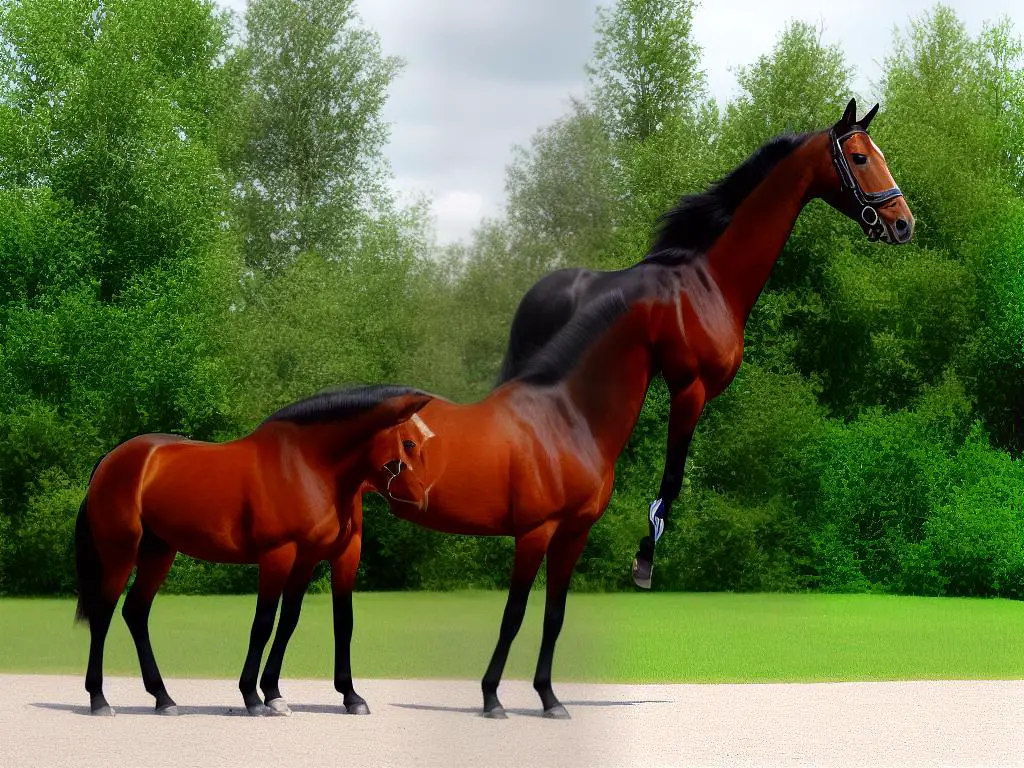
Breeding & Bloodlines
Understanding the American Saddlebred registry is key to preserving and promoting the rich lineage of these remarkable and versatile horses. By familiarizing yourself with the breed’s history, conformation, and characteristics, you contribute to the ongoing appreciation and development of the American Saddlebred. Your dedication and skill will not only enhance your personal experience with these horses but will also help to ensure the continued success and legacy of this distinguished breed.
Breeding and bloodlines are essential aspects to consider for those looking to breed or acquire American Saddlebred horses.The breeding process comprises of carefully selecting two parent horses – a sire (stallion) and a dam (mare) – with the goal of producing offspring that exhibit desired traits, such as temperament, conformation, or performance abilities.This careful selection aims to preserve and enhance the qualities that make American Saddlebred horses truly unique and exceptional.One of the most critical factors when selecting horses for breeding is their bloodlines – the lineage and genetic traits that are passed down from generation to generation.The American Saddlebred registry maintains a comprehensive database of registered horses, tracing their pedigrees and lineages to the foundation stock.This detailed information allows breeders and prospective buyers to research the bloodlines of their desired horses, including the ancestors’ achievements, health, and specific genetic traits.Desirable bloodlines typically include a history of outstanding show performance, excellent temperament, and strong conformation.Moreover, the registry strongly encourages responsible breeding practices to ensure the propagation of healthy and sound horses.Aside from researching pedigrees and selecting appropriate breeding pairs, genetic considerations also play a significant role in the American Saddlebred breeding process.The registry encourages and supports genetic testing for inherited disorders and traits to ensure the continued well-being of American Saddlebred horses.This proactive approach aids breeders in making informed decisions when choosing breeding pairs and adopting responsible breeding strategies.
The American Saddlebred registry plays a crucial role in maintaining the breed’s overall health, quality, and vitality for future generations by diligently addressing genetic considerations. It ensures that enthusiasts and hobbyists have access to a rich heritage of exceptional horses with the desired traits and characteristics that make American Saddlebreds truly unique.
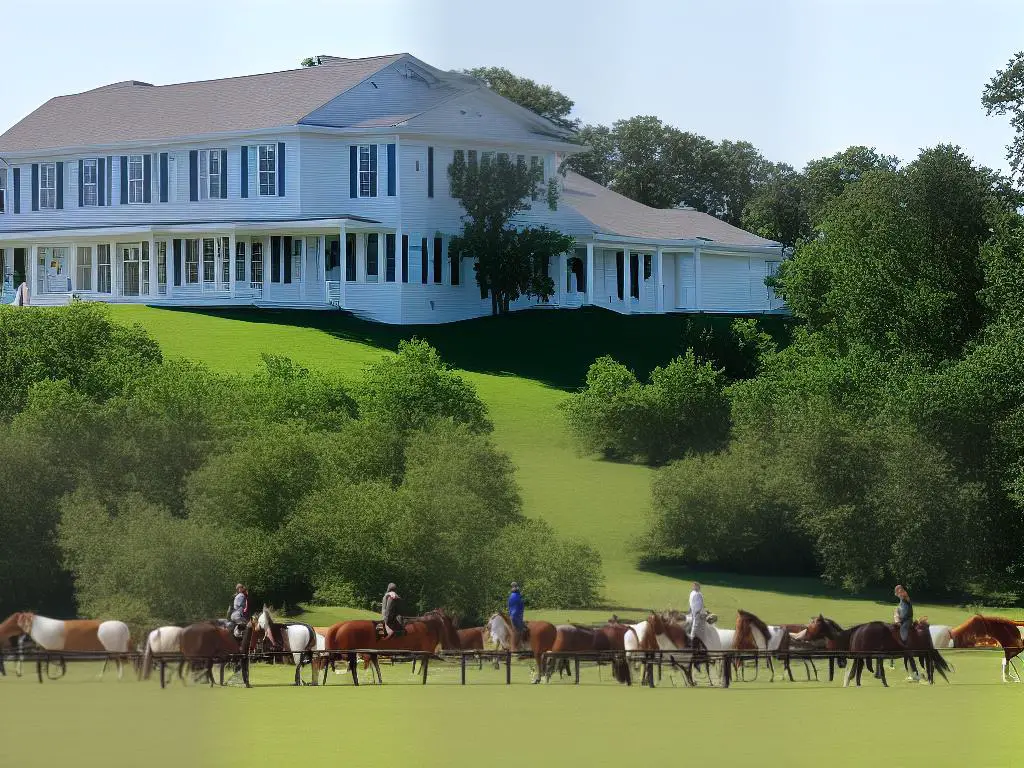
Famous American Saddlebred Horses
Noteworthy examples of American Saddlebreds include the legendary Wing Commander. Born in 1943, this chestnut stallion was celebrated for his incredible athleticism, showmanship, and six world titles in the Five-Gaited World’s Grand Championship. Wing Commander’s success extended beyond the show ring, as he was also a successful sire producing numerous top-performing offspring. This further solidified his impact on the American Saddlebred breed and registry. Today, his legacy lives on within the community, as many of the current show horses can trace their lineage back to this extraordinary horse.
Another noteworthy American Saddlebred mare was My-My. Born in 1956, My-My was a bay mare known for her intelligence and grace in the show ring. She was the first mare to win a World’s Grand Championship in Fine Harness, as well as the first to win a World’s Grand Championship in Three-Gaited competition. Many in the American Saddlebred community credit My-My with paving the way for mares to become more successful in championships, allowing their accomplishments to be more visible and respected. Her influence on the breed and registry can still be felt today, as the qualities she displayed continue to be sought after in modern American Saddlebred lines.
One cannot discuss famous American Saddlebred horses without mentioning Supreme Sultan. Born in 1966, this chestnut stallion was an extraordinary sire who impacted the breed with his consistent ability to produce exceptional offspring. Among his notable progeny are several World’s Grand Champions and Reserve Champions in various divisions, showcasing his influence on multiple generations of American Saddlebred horses. His powerful and elegant presence have earned him a lasting reputation within the American Saddlebred registry, which continues to recognize his legacy and impact on the breed.

Through understanding the American Saddlebred horse’s history, traits, registry, and the numerous disciplines they excel in, enthusiasts and hobbyists can better appreciate and care for these incredible animals. With a focus on training, care, and breeding, the American Saddlebred remains a cherished and valuable horse breed, continuing to inspire equestrians around the world with their unmatched grace, athleticism, and spirit.
